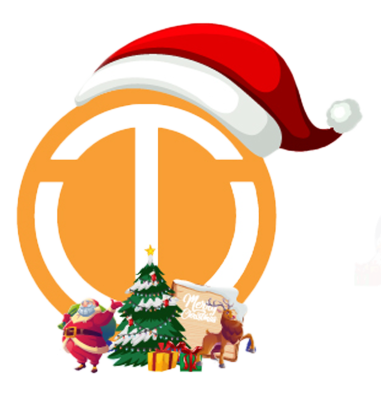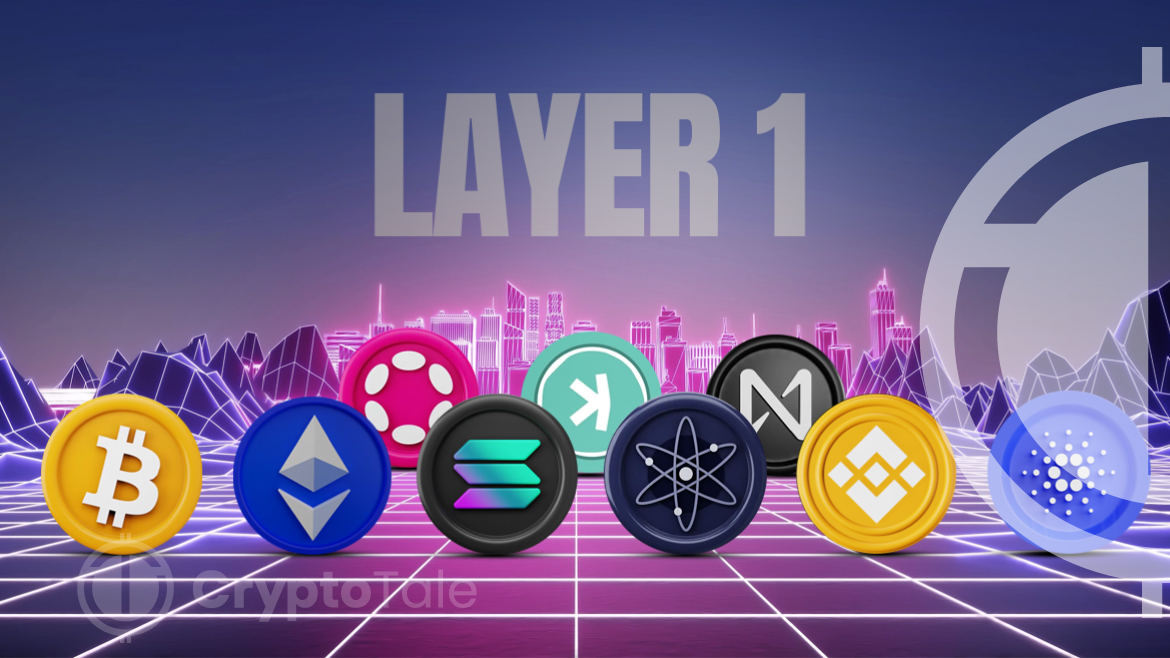In the crypto world, layer 1 blockchains stand as foundational pillars on which the decentralized ecosystems are built. These blockchains serve as the base for various decentralized applications, offering security, scalability, and interoperability. In this blog, we will discuss the top layer 1 blockchain.
Top Layer 1 Blockchain
1. Bitcoin (BTC)
Bitcoin, the pioneer of cryptocurrencies and blockchain technology, stands as a robust layer 1 blockchain. It offers high security and immutability and is used for digital payments and investments. Though the Bitcoin blockchain was cherished as a store of value by crypto enthusiasts, its founder still remains anonymous. BTC is often referred to as ‘digital gold’ and has a limited supply of 21 million tokens.
One of the major events in the ecosystem is the Bitcoin halving event, which happens every four years. It reduces the block rewards for miners by half to decrease the rate at which new Bitcoins are mined. Besides acting as a digital currency, it also serves as a foundation for various decentralized applications.
2. Ethereum (ETH)
Ethereum is one of the most popular layer 1 blockchain and has succeeded in developing the most robust smart contract technology. With unparalleled security and a strong network, Ethereum maintains a significant market capitalization despite its scalability issues. Furthermore, the platform EVM (Ethereum Virtual Machine) facilitates cross-platform application development, fostering interoperability across Layer 1 ecosystems.
The platform is often dubbed the‘ world computer’ of blockchain as it hosts various applications from DeFi ecosystems to the metaverse. Its upgrade to Ethereum 2.0, which changed the consensus mechanism from PoW to PoS, aims to tackle sustainability and scalability issues. In addition, it improves energy efficiency and transaction throughput and reduces carbon footprint.
BlackRock Amends S-1 Filing For Ethereum ETF With the SEC3. Solana (SOL)
Solana is a well-known layer 1 blockchain similar to Ethereum in terms of scalability and heightened security. It has a robust ecosystem and can process over 3,000 transactions per second. The platform leverages two consensus mechanisms: Proof of History (PoH) and Proof of Stake (PoS), which enables fast speed and efficiency. Furthermore, PoH helps streamline the sequencing of transactions, ensuring efficiency and low costs.
The Solana ecosystem began to flourish with the introduction of Solana Improvement Documents (SIMDs) and the Firedancer upgrade in 2023. SIMD helped formalize the process for developers to suggest protocol enhancements, and Firedancer helped boost transaction speeds. The SOL token is used for smart contract execution and as transaction fees. On the other hand, validators and delegators stake SOL to secure the network.
4. Avalanche (AVAX)
Avalanche is renowned for its rapid processing speed. It handles 4,500 transactions per second and has a low base fee. The platform ensures robust security, scalability, and decentralization with the help of its unique consensus mechanism, which combines Classical and Nakamoto consensus. In addition, the platform was specifically designed for decentralized applications and custom blockchain networks.
The platform overcomes blockchain’s limitations and excels in scalability and high-throughput capabilities. Its flexibility allows developers to create diverse blockchain applications within the ecosystem. Avalanche’s unique consensus protocol and versatile infrastructure make it a promising platform for different decentralized applications and token ecosystems.
5. Cosmos (ATOM)
Cosmos addresses scalability and interoperability issues. It leverages the Inter-Blockchain Communication (IBC) protocol, allowing blockchains to interact while maintaining sovereignty. The platform also facilitates seamless communication among diverse ecosystems The Cosmos Hub, also known as Gaia, operates based on the Proof of Stake mechanism and provides routing within the blockchain.
In 2023, the platform introduced Interchain security and the white paper of Cosmos Hub 2.0. By staking tokens, users can not only secure the network and earn rewards but also have the power to participate in the network’s decision-making process.
6. Binance Chain (BNB)
Binance Chain, which was developed by Binance, is known for its innovation and efficiency and offers a robust foundation for decentralized applications (dApps) and token ecosystems. It features dual chain architecture that allows for flawless asset transfers between blockchains and supports diverse applications in DeFi, NFTs, and gaming. Furthermore, BNB excels in throughput transactions, processing thousands of transactions per second and ensuring a smooth network experience.
The platform is compatible with Ethereum Virtual Machine (EVM) and can run applications and tools that were originally developed for Ethereum. This attracts developers from the Ethereum ecosystem to the BNB system to develop and deploy decentralized applications, expanding the range of dApps available in the blockchain. BNB’s consensus mechanism, Proof of Staked Authority (PoSA), allows for cheaper and faster transactions than Ethereum.
7. Cardano (ADA)
Cardano is a top layer 1 blockchain known for its scalability, interoperability, and sustainability. It is based on peer-reviewed academic research and a unique PoS protocol called Ouroboros as a consensus mechanism. The platform was designed with efficiency in mind, making it suitable for decentralized finance applications, games, and tokens.
The platform offers fast and efficient transactions, and its native token, ADA, is used for network operations and maintenance. Its layered architecture enhances security and promotes sustainability.
Ripple CEO Predicts Imminent Launch of XRP, Solana, and Cardano ETFs8. Polkadot (DOT)
Polkadot is renowned for its trust-free transfers of messages and value across different blockchain platforms. It is a multi-chain blockchain that shares unique features and pools security from various blockchains. It has features like interoperability, scalable multi-chain architecture, and the ability to connect and secure specialized blockchains called parachains.
The platform supports various types of digital data, including NFTs, smart contracts, cross-blockchain token transfers, dApps, and more. Its native token is used for governance, security, and bonding parachains to the network. Furthermore, Polkadot 2.0 upgrades governance, scalability, and interoperability.
9. Kaspa (KAS)
Kaspa possesses a high block rate and instant finality. This allows the network to be much faster and more scalable than traditional blockchains. The platform has a unique consensus mechanism called the “GHOSTDAG,” which enables rapid transaction processing and scalability. In addition, Kaspa made a major breakthrough in blockchain efficiency, offering faster transaction speeds by shifting to the Dag Knight consensus. The platform also transitioned from GoLang to Rust, optimizing transaction and block processing. It also increased the number of blocks and transactions processed per second.
10. NEAR Protocol (NEAR)
NEAR Protocol is popular for its innovative approach to scalability, usability, and developer support. It is based on the PoS consensus mechanism and has various applications, such as NFT, gaming, and decentralized finance. The platform emphasizes regulatory compliance and establishes a secure environment for businesses and users.
It has a distinct scaling solution called Nightshade, which offers various high-performance capabilities. NEAR aims to lead in Web3 technology, offering a personalized, intuitive, and secure online ecosystem. The platform offers low-cost and fast transactions and has features like sharding for processing transactions and enhancing scalability.
Conclusion
The importance of layer 1 blockchains underscores their role in shaping decentralized ecosystems. All the above layer 1 blockchains offer unique features and various benefits catering to the diverse needs of the decentralized landscape. They serve as the foundation for various applications and address scalability, interoperability, and security concerns.












